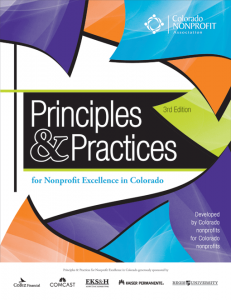This is the second post in a series about Colorado nonprofit corporate governance issues. Click here for the first post on proxy voting, and check back in coming weeks for upcoming posts on parliamentary rules, and distinctions between articles of incorporation and corporate bylaws.
In Colorado, nonprofit corporations can have voting members, but are not required to do so. When a new organization files its articles of incorporation, one of the questions it will have to answer is whether it has voting members. Some new to the area may confuse voting members for board members, and mistakenly answer this “yes.” Here, we’ll go over some basic information about voting members and how they differ from members of the board of directors.
Role in governance. Both voting members and directors play key roles in governing a nonprofit. The voting members generally elect all or a portion of the board of directors, and also will have a say in other key issues including amendment of corporate documents. The board, however, has general management and oversight responsibility over of the nonprofit, and will vote on a number of issues that aren’t submitted to the members.
What about nonvoting members? The Colorado Revised Nonprofit Corporation Act affords rights to voting members, including rights to inspect records and meeting notice rights. They can be onerous, and many organizations choose to have nonvoting members instead. These nonvoting members do not have voting rights nor other rights associated with that status, but may get certain benefits in connection with their status. This can be a key way for an organization to fundraise or maintain involvement with interested individuals.
Converting to nonvoting members. Organizations that initially begin with voting members may eventually find that this structure doesn’t suit their needs. Often, it can be difficult to get a quorum to vote on issues—yet changing the quorum requirement requires member action. This can put a nonprofit in an untenable position with respect to accomplishing its mission. For that reason, it’s important to consider carefully the voting member decision at the front end.


